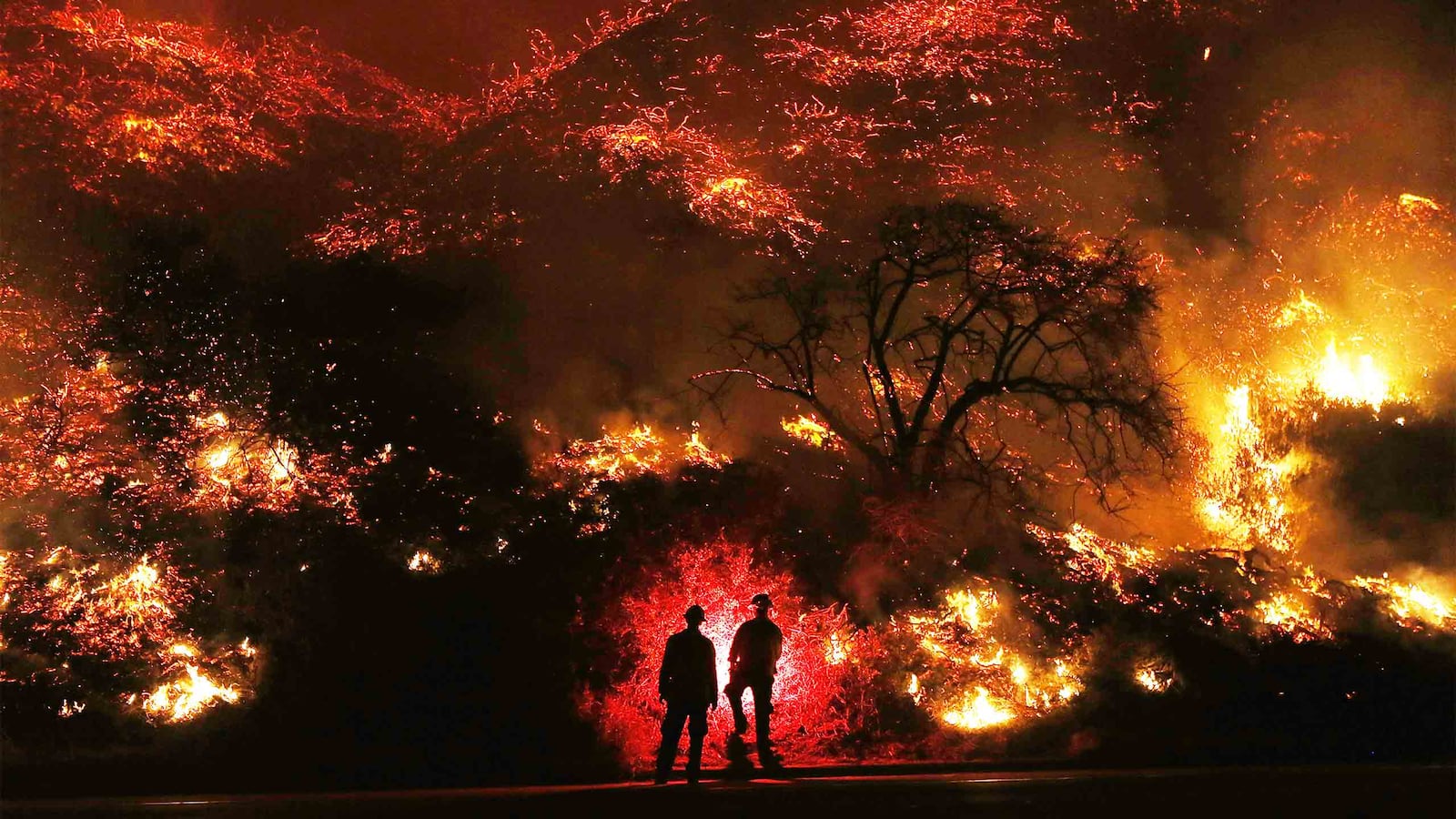LOS ANGELES, California — When Los Angeles City firefighter Ryan Primosch, Station 88 apparatus operator, reported for duty early last week, their fire engine was gone. Approximately 16 members of Primosch’s company had been sent to the Creek Fire off the 210 freeway in Pasadena. The coming days would be spent helping re-fuel fire engines and trucks battling the Southern California wildfires in Santa Barbara, Los Angeles, and San Diego as well as bringing resources to various locations.
This was not the first major disaster Primosch has aided. Back in September Primosch was sent to Houston and Miami as a rescue squad officer on Los Angeles Fire Department’s Swift Water Rescue Team. (LAFD Swift Water Rescue Team members are specially trained firefighters who are dispatched to floods or situations where someone may be trapped in rushing water.)
The first of California’s wildfires began on December 4 in Ventura County; the Thomas Fire has expanded to Santa Barbara County and is only 15 percent contained. Since then, the Los Angeles-area has seen unrelated fires crop up thanks to the area’s dry weather, including the Skirball Fire near UCLA and the Lilac Fire in San Diego County.
The biggest enemy of containment has been unusually powerful Santa Ana winds. With hurricane-like wind, fires grew at an alarming rate that firefighters could not keep up with. Even helicopters could not take off, hindering all air-support the fire companies would normally receive.
“When you have a fire pushed by wind, it is impossible to stop,” Primosch told The Daily Beast.
The Santa Anas were truly a game-changer in tackling the blaze. Primosch said the winds made it a “career fire” for most everyone in the department.
Fire companies that were initially sent out to the scene spent approximately 36 hours without relief as they tried to manage the growing blaze. Southern California later received mutual aid from agencies all throughout the state as well as Arizona, Nevada, Washington, and Oregon.
Primosch noted a “definite turn” in the fires as the winds died down from 50–70 mph Thursday evening. Since then, most fires have been 90 or 100 percent contained. However, the Skirball Fire remains 75 percent contained, the Lilac Fire 60 percent contained, with the Thomas Fire only at 15 percent containment.
The Thomas fire expanded late Saturday night, forcing another round of evacuations into Carpinteria and Montecito.
It is expected Southern California will have a lengthy “mop-up” period once the fires are contained. Mop-up is the process that occurs once a fire is out to ensure another fire does not begin from the embers of the previous, i.e. pouring water on tree stumps that may contain embers and re-creating fire roads.
Mop-up for the current fires is estimated at one to two years.
The fires of the past week are some of the worst Southern California has ever seen. Hundreds of thousands have been evacuated; California Governor Jerry Brown told residents, “We’re facing a new reality.”





